Schindler’s List, a film released in 1993, stands as a poignant testament to the human spirit in the face of unspeakable cruelty. Directed by Steven Spielberg, the movie brings to life the true story of Oskar Schindler, a German industrialist who saved the lives of more than a thousand Jewish refugees during the Holocaust by employing them in his factories.
The film juxtaposes the stark reality of the persecuted Jews’ plight with the evolving conscience of Schindler, as you watch him transform from a profit-driven businessman into a saviour.
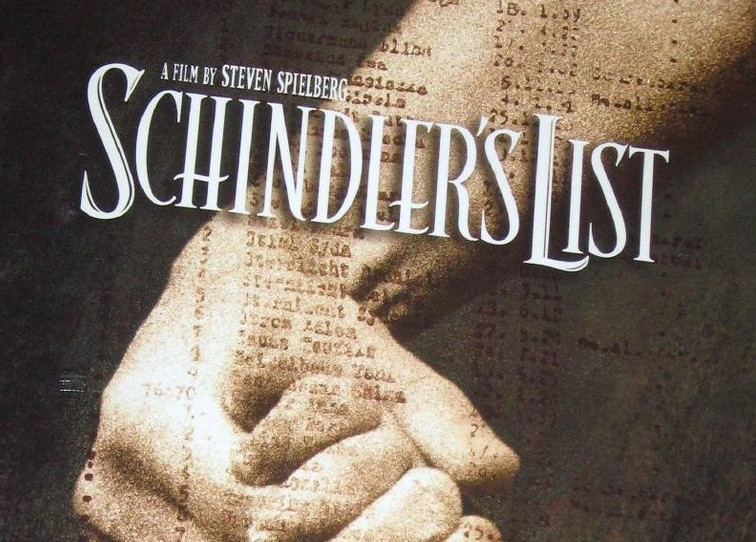
Employing stark black and white cinematography and a meticulous attention to historical detail, Spielberg’s narrative strategy serves to amplify the film’s emotional impact.
Your understanding of the Holocaust is challenged as Schindler’s List paints a harrowing yet nuanced picture of World War II’s darkest chapter.
Its evocative performances, particularly by Liam Neeson as Schindler, Ben Kingsley, playing his accountant Itzhak Stern, and Ralph Fiennes as the ruthless Nazi commander Amon Göth, anchor the film’s powerful depiction of hope and humanity amidst terror.
As a piece of historical drama, Schindler’s List is more than a mere recounting of events; it is an immersive experience designed to confront you with the capacity for both evil and goodness within humanity. The film’s impact extends beyond its runtime, leaving a lasting impression that has solidified its status as a culturally significant masterpiece in the cinematic world.
Historical Context of film Schindler’s List
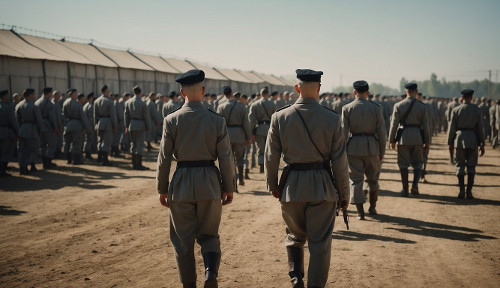
In understanding the film “Schindler’s List,” you need to grasp the pivotal events of World War II, discern the significance of Oskar Schindler’s actions, consider the plight of Poland’s Jewish community, and acknowledge the horrors of Auschwitz.
World War II and the Holocaust
During World War II, the Nazi Party orchestrated the Holocaust, a systematic genocide that aimed to annihilate the Jewish population across occupied Europe.
It is within this harrowing backdrop that “Schindler’s List” is set. As the Nazis waged war across the continent, their pursuit to exterminate Jews intensified, leading to some of history’s darkest episodes.
Real-life Figure Oskar Schindler

Oskar Schindler was a member of the Nazi Party who saved nearly 1,200 Jewish workers by employing them in his enamelware and munitions factories.
Despite his initial motivation being profit during the war, Schindler’s priorities shifted as he witnessed the escalating brutality against the Jews, compelling him to risk his life and fortune to protect his workers.

The Jewish Population in Poland
Before the war, Poland housed the largest Jewish community in Europe, a vibrant population that faced near obliteration by the end of the Holocaust.
The Kraków Ghetto, where much of “Schindler’s List” unfolds, was a confined area where Polish Jews were forcibly relocated, enduring overcrowded and inhumane conditions before many were deported to concentration camps.
Auschwitz Concentration Camp
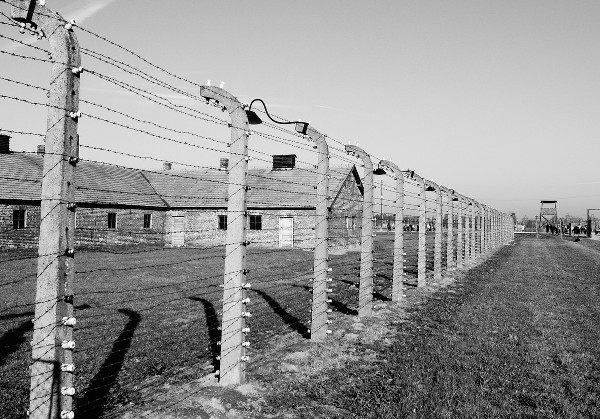
The infamous Auschwitz Concentration Camp, located in German-occupied Poland, became the epitome of Nazi cruelty. Commanded by Rudolf Höss, Auschwitz was not just a single camp but a complex of over 40 camps where atrocious crimes were committed against humanity, chiefly the extermination of Jews.
Schindler’s List brings to light some of these grim realities, reminding viewers of the unfathomable suffering that occurred.
Read also:
- Why Visit Auschwitz
- Airports Near Auschwitz
- Arbeit Macht Frei Meaning
- Auschwitz Tours from Krakow
- Auschwitz Tour with Hotel Pick-up
- Auschwitz: What to Expect During Your Visit
- Can You Visit Auschwitz from Krakow?
- Facts About Auschwitz
- How to Book Auschwitz Tour?
- How to Get to Auschwitz
- Cheapest Way to Visit Auschwitz
- Krakow: Auschwitz-Birkenau Full-Day Guided Tour
- What Do I Need to Know Before Going to Auschwitz?
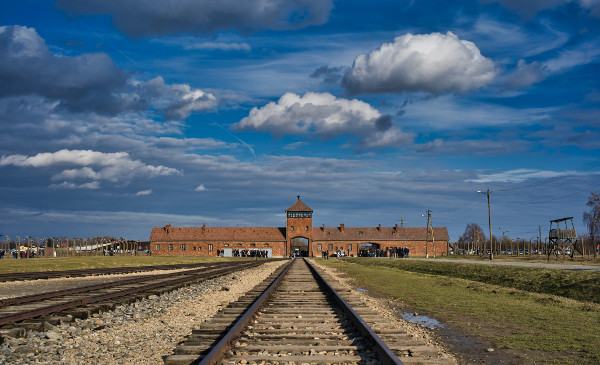
Production and Development
Schindler’s List brought together a formidable team to adapt a significant historical novel into a film that is both respectful of its source material and cinematically compelling.
The production and development process involved meticulous planning, collaboration, and reverence for the content, ensuring authenticity and emotive storytelling.
Adaptation of Thomas Keneally’s Novel
Thomas Keneally’s Booker Prize-winning novel, “Schindler’s Ark,” serves as the foundation for the movie.
The adaptation process respected the book’s factual accuracy and emotional impact, framing the harrowing story of Oskar Schindler and the Jewish workers he saved during the Holocaust.
Steven Spielberg’s Direction
Steven Spielberg, the renowned filmmaker, undertook the direction of Schindler’s List with a clear vision. His approach combined stark realism with a poignant narrative, employing black-and-white cinematography to echo the period’s historical documentation and engage viewers on a profound level.
Screenplay by Steven Zaillian
The screenplay, penned by Steven Zaillian, was critical in translating Keneally’s narrative into a structured cinematic format.
Zaillian’s script facilitated Spielberg’s vision, ensuring the film’s historical authenticity while delivering powerful storytelling.
Produced by Branko Lustig and Gerald R. Molen
Branko Lustig and Gerald R. Molen, serving as producers, were instrumental in bringing the project to life.
Their contributions ensured that the film had the necessary resources and logistical support, overseeing the complex task of recreating the events of World War II for the screen.
Filming Locations
Krakow and its surrounding areas provided the backdrop for Schindler’s List, with the filmmakers opting to shoot in actual locations where the historical events unfolded.
This choice augmented the movie’s authenticity, immersing the audience in the very places where Oskar Schindler carried out his life-saving actions.
Read also:
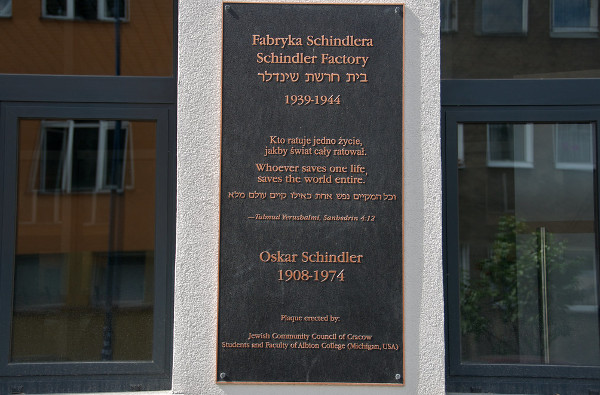
Schindler’s List Plot Summary
“Schindler’s List” is a poignant film based on true events during World War II. You observe Oskar Schindler, a German businessman, initially moved by self-interest, who becomes an unlikely humanitarian amid the barbaric Nazi reign.
Schindler arrives in Kraków, Poland, with a plan to profit from the ongoing war. He is a member of the Nazi party, which assists him in winning military contracts to produce enamelware.
As the war progresses, you see Schindler’s transformation through his relationships with the Jewish community. He witnesses their dire circumstances and brutal treatment under Nazi rule.
Utilising his factory, Schindler starts employing Jewish workers, which, although it starts as just another business tactic, becomes a decisive endeavour to save lives.
Your attention is drawn to the meticulous enforcement of the forced relocation of Polish Jews into ghettos. Despite the overwhelming atmosphere of despair, you find Schindler manoeuvring within the system, all the while bribing and charming Nazi officials to protect his workforce.
By the film’s end, Schindler has saved over a thousand Jews from death in the concentration camps. The emotional culmination of the film leaves you with a profound sense of the impact a single individual can have even amidst widespread horror. His actions, driven by courage and morality, are a testament to the difference one person can make in the face of systematic atrocity.
Schindler’s List Cast and Characters
In ‘Schindler’s List’, a compelling ensemble of actors brings to life the harrowing narrative set against the backdrop of the Holocaust. Central to the film are the powerful performances by the lead actors, whose portrayals of historical figures are both poignant and deeply moving.
Liam Neeson as Oskar Schindler
Liam Neeson takes on the complex role of Oskar Schindler, an industrious German businessman who becomes an unlikely saviour during the Holocaust. His gradual transformation from opportunistic profiteer to a hero who saved over a thousand Jewish workers is central to the film’s narrative.
Ben Kingsley as Itzhak Stern
Ben Kingsley portrays Itzhak Stern, Schindler’s diligent Jewish accountant. Stern is instrumental in running the business and is essential to the list’s creation, which ultimately saved many lives. Kingsley’s subtle and nuanced performance highlights Stern’s quiet strength and moral conviction.
Ralph Fiennes as Amon Göth
In a chilling portrayal, Ralph Fiennes plays Amon Göth, the ruthlessly cruel SS commandant of the Kraków-Płaszów concentration camp. Fiennes embodies the calculating brutality of Göth, whose unpredictable nature and violent actions add a palpable tension to the film.
Supporting Roles
The film features a range of supporting characters who enrich the storytelling with their diverse narratives. Embeth Davidtz plays Helen Hirsch, Göth’s housemaid, whose harrowing ordeal symbolizes the persecution many endured. Caroline Goodall appears as Schindler’s wife, Emilie, who plays a pivotal role in his life and transformation.
You’ll also see Hans-Michael Rehberg as Rudolf Höss, along with Jonathan Sagall and Mark Ivanir, who contribute significantly to the film with their roles as Jewish workers in Schindler’s factory. The commitment of actors like Andrzej Seweryn, among others, ensures the ensemble’s deeply affecting depiction of historical reality.
Cinematic Techniques

In ‘Schindler’s List’, a range of cinematic techniques are utilised to create a profound impact, including its distinctive visual style, memorable score, and meticulous editing.
Black and White Visual Style
The decision to film ‘Schindler’s List’ predominantly in black and white reflects its historical context and adds gravity to the drama unfolding on the reel. The stark contrast between light and shadow is not only symbolic but also serves to focus your attention on the emotional weight of the scenes.
The sparing use of colour, particularly the red coat of a little girl, is a poignant choice that underscores specific narrative moments, leaving a lasting impression on you.
John Williams’ Score
John Williams, a venerated composer, crafts a score for ‘Schindler’s List’ that is both haunting and deeply moving. His musical arrangements provide an additional layer to the film’s atmosphere, capturing the sombre and tragic essence of the story.
The violin, often associated with Jewish culture, plays a central role in the score and amplifies the emotional resonance throughout the film.
Editing by Michael Kahn
Michael Kahn’s editing choices in ‘Schindler’s List’ contribute significantly to the film’s narrative power. His ability to interweave scenes seamlessly and guide your attention to pivotal moments in the drama is a testament to his skill.
The pacing, dictated by his editing, ensures that each scene maintains the necessary tension and emotional connection, keeping you engaged throughout the film’s duration.
Themes and Motifs

As you explore ‘Schindler’s List’, you’ll encounter deep-seated themes and motifs that offer a profound commentary on the nature of humanity. These thematic strands encompass the complexities of power, altruism, and the pervasive shadow of violence.
Power and Greed
Power and greed emerge distinctly through the depiction of Nazi characters in ‘Schindler’s List’. The film portrays the corruption that absolute power can engender, as seen in the character of Amon Goeth, the commandant of the Plaszow concentration sub-camp.
Goeth embodies the chilling indifference of the Nazis to the value of human life, often deciding who will live or die based on whims. The Jewish accountant, Itzhak Stern, by contrast, represents the opposing force to this greed—leveraging his position to save lives by including as many Jews as possible on the list signed by Oskar Schindler.
Humanity and Compassion
Amid the stark portrayal of cruelty, humanity and compassion shine through Oskar Schindler’s evolution from a war profiteer to a humanitarian. His passion to protect his Jewish workers grows throughout the film, reflecting the theme that even in the darkest times, compassion can prevail.
Schindler’s transformation is marked by his daring acts to ensure the safety of his workers, illustrating that individuals have the power to enact positive change.
Violence and Brutality
The motif of violence and brutality is depicted through explicit scenes of the Holocaust’s horrors. The stark black-and-white cinematography intensifies the sense of past atrocity, placing you in the immediacy of the events.
The violent acts perpetrated by the Nazis, including the brutal treatment of Jews and the arbitrary shootings, underscore the film’s exploration of inhumanity and the consequences of unchecked aggression.
The brutality experienced within the concentration camps is not only a historical record but also serves as a warning about the depths of cruelty that can arise from hatred and fanaticism.
Cultural and Historical Impact
In this section, you’ll explore how ‘Schindler’s List’ resonated with audiences and critics, its lasting influence on cinema and society, and the recognition it has garnered.
Public and Critical Reception
Upon its release, ‘Schindler’s List’ received widespread acclaim for its raw portrayal of the Holocaust. Your understanding of the era’s despondency and the experiences of Jewish people during World War II was profoundly shaped by this film.
Critics highlighted its impactful cinematography and narrative, which often left audiences with a deeper sense of history and empathy.
Influence on Cinema and Society
‘Schindler’s List’ not only played a pivotal role in cinema as a memorable and compelling historical drama but also contributed significantly to your understanding of cultural and educational content.
The film inspired discussions about the Holocaust in public forums and education systems, highlighting the importance of remembering such historical events.
Additionally, it encouraged the production of documentaries and films centred around similar themes, thereby enriching arts and entertainment.
Recognition and Awards
The film’s excellence was commemorated through multiple accolades, most notably securing seven Academy Awards, including Best Picture and Best Director for Steven Spielberg.
It stands out in the annals of the Academy for both its artistic merit and its capacity to touch on a sensitive and crucial period of history.
The film’s legacy is reflected not only in its awards but also in its role in stimulating the creation of archives and interviews that document survivors’ testimonies, thus contributing to the fields of arts and science.
Legacies of Schindler’s List
Schindler’s List, a cinematic masterpiece directed by Steven Spielberg, is not just a film but a powerful educational tool. Your understanding of its legacy can deepen through its use in education and its impact on descendants of Holocaust survivors.
Educational Use
You may find that Schindler’s List serves as a significant resource in Holocaust education. The film’s realistic portrayal of the horrors of the Holocaust has made it an important tool for teaching about this dark chapter in history.
Many schools and educational institutions around the world incorporate the movie into their curriculum. This inclusion encourages discussions on morality, ethics, and the consequences of hatred.
By observing the character of Oskar Schindler and his transformative journey from complicit businessman to saviour, you’re exposed to a complex narrative that underscores the importance of individual action in the face of atrocity.
The story told in Schindler’s List conveys a profound Talmudic quotation often recited concerning the Holocaust: “Whoever saves one life, saves the world entire.”
This message resonates within educational settings, prompting reflections on personal responsibility and human dignity.
Yad Vashem, the World Holocaust Remembrance Center, along with numerous Holocaust museums and memorials, often reference Schindler’s List for its authentic representation and its role in memorialisation.
The descendants of those who were saved by Schindler, known as “Schindlerjuden,” have contributed personal accounts that reinforce the film’s historical accuracy and emotional truth. These testimonies serve to educate current and future generations about the impact of the Holocaust on individuals and the ripple effect on their descendants.
From an educational standpoint, Schindler’s List has not only become a visual document of history but also a prompt for critical thinking and deep analysis of human rights issues that are, sadly, still relevant today.
Technical Information
In this section, you will find detailed technical insights about the film ‘Schindler’s List’, from its running time to the sound system used, and its release.
Film Duration
The total running time of ‘Schindler’s List’ is 195 minutes. For television broadcasts in some regions, such as Turkey, the duration was slightly shorter, at 185 minutes.
Sound and Music
‘Schindler’s List’ originally utilised a DTS stereo sound mix. For the 25th Anniversary re-release, the film was updated to include Dolby Atmos, enhancing the audio experience.
The music, composed by John Williams, plays a crucial role in establishing the film’s sombre tone.
Start Planning Your Krakow Trip Now!
- Unsure where to stay in Krakow? Discover top-rated Old Town and Kazimierz hotels with Booking.com.
- Book your airport transfer now and enjoy a hassle-free ride directly to your hotel. Driver will meet you at John Paul II International Airport Kraków–Balice.
- Take a Tour of Auschwitz. Arrange a visit to the Auschwitz-Birkenau Memorial and Museum to pay tribute and learn about this significant historical site.
⚠️ SUMMER BOOKING ALERT: Auschwitz tours are in high demand during the busy summer season. Secure your visit now to guarantee your preferred date and time slot. Last-minute availability cannot be guaranteed during this peak season. Due to increased visitor numbers in summer, it’s strongly recommended to book your tickets and tour to Auschwitz well in advance to secure your preferred dates and times! 🔖
- Explore the Fascinating Wieliczka Salt Mine! Book your guided tour today. These tours are very popular, so book early to avoid disappointment and ensure your spot.
- Looking for ideas? Check out our KrakowTOP.org recommended itineraries, including the famous Christmas Market, holiday events, and must-see Krakow attractions like Wawel Castle, Oskar Schindler’s Factory and St. Mary’s Basilica.
Release and Distribution
‘Schindler’s List’ was distributed by Universal Pictures, a major American film studio.
The production company involved was Amblin Entertainment, which is known for producing other notable works in collaboration with Steven Spielberg.
The film was released to both critical acclaim and audience admiration, cementing its status as a significant historical drama.










